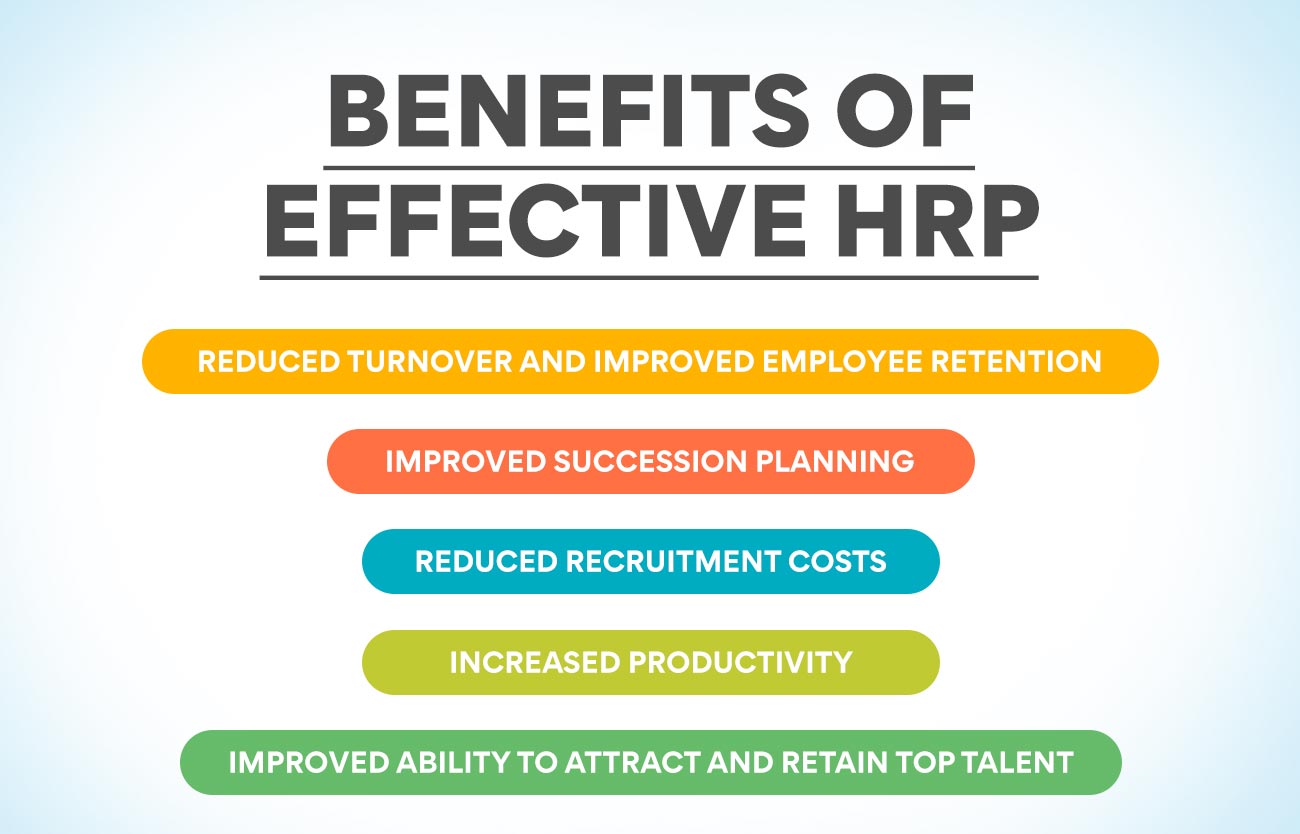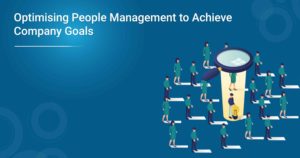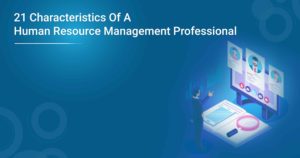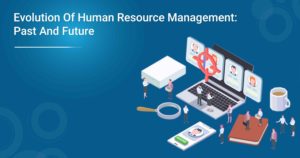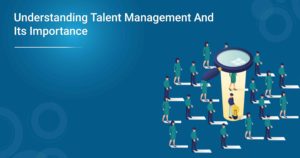Human resource planning is compulsory for forecasting an organisation’s future human resource needs and ensuring that the necessary resources are available when needed. It is a proactive approach to managing an organisation’s most valuable asset – its people. While some may see human resource planning as a bureaucratic exercise, it is a critical function that can significantly impact a company’s bottom line. This blog post will discover why human resource planning is compulsory for any company that wants to achieve sustainable growth.
What is Human Resource Planning?
Human resource planning (HRP) is compulsory for forecasting the need for the right talents in an organisation at the right time. It involves assessing current and future human resource needs and developing strategies to ensure that the company has an adequate amount of employees with the necessary skills and knowledge to meet its business objectives.
Human resource planning is critical to any business strategy, as it ensures the company has the workforce it needs to achieve its goals. Without proper planning, a company may find itself without the skilled workers it needs to stay competitive or face a shortage of workers altogether.
When done correctly, human resource planning can help a company avoid many potential problems, such as:
- A shortfall of skilled workers needed to meet the demand
- An oversupply of workers leads to increased costs
- Incompetence to attract and retain top talent
- Inefficient use of human resources leading to higher costs
By taking the time to properly plan for its human resources needs, a company can avoid these pitfalls and position itself for long-term success.
Also Read: Breaking Down The Scope Of Human Resource Management
What Is The Significance of HRP?
- Human resource planning ensures that a company has the correct set of employees holding the necessary skills to meet its business goals.
- Human resource planning helps a company avoid both understaffing and overstaffing, which can lead to inefficiencies and lost productivity.
- Human resource planning can help a company save money by ensuring that it only hires the staff it needs and doesn’t have too many employees on its payroll.
- Human resource planning ensures that a company has a talent pipeline ready to step into new roles as needed, helping to avoid disruptions in employee turnover.
- Human resource planning can help a company stay compliant with government regulations related to employment and labour law.
What Are The Crucial Benefits of Human Resource Planning?
- Human resource planning ensures that the right people are in the right jobs at the right time. This maximises employee productivity and effectiveness while reducing stress and turnover.
- Human resource planning provides a road map for organisational growth. By aligning HR strategies with business goals, organisations can make well-informed decisions about where to invest resources for maximum impact.
- Human resource planning improves communication and coordination between different departments within an organisation. By aligning HR goals with those of other departments, silos are broken down, and everyone can work together more effectively towards common objectives.
- Human resource planning promotes a culture of continuous learning and development. By investing in employee training and development, organisations can keep their workforce agile and adaptable to change.
- Human resource planning helps organisations to attract and retain top talent. By understanding the skills and experience required for critical positions, organisations can develop targeted recruitment and retention strategies.
- Human resource planning facilitates succession planning and continuity management. By identifying future leaders and high-potential employees, organisations can ensure a smooth transition of power in times of change or crisis.
- Human resource planning enhances financial performance. By aligning HR strategies with financial goals, organisations can make budgeting decisions that improve bottom-line results.
- Human resource planning creates a competitive advantage. By leveraging HR data and analytics, organisations can gain insights into their workforce that allow them to make strategic decisions that give them a leg up.
Hard Vs Soft Human Resource Planning. What Is The Difference?
HRP is the process of forecasting future HR needs and determining how to meet those needs. There are two main approaches to human resource planning: hard and soft.
Hard human resource planning is based on quantitative methods, such as statistical models and data from past performance. This approach is often used in businesses with stable environments and predictable demand. On the other hand, soft human resource planning relies more on qualitative methods, such as interviews and surveys. This approach is often used in businesses with rapidly changing environments or unpredictable demand.
The main difference between hard and soft human resource planning is the amount of emphasis placed on data and analytics. Hard human resource planning relies greatly on data and analytics for making predictions about future needs. In contrast, soft human resource planning places more emphasis on understanding the current situation and using that understanding to make predictions about future needs.
Role of HRP in An Organisation
Human Resource Planning is Compulsory for the process of forecasting an organisation’s future personnel needs and ensuring that only skilled people are hired for the right jobs at the right time. It is an essential tool for managing talent and ensuring that an organisation has the workforce it needs to achieve its strategic objectives.
There are many benefits of effective HRP, including:
Reduced turnover and improved employee retention: By accurately forecasting future personnel needs, organisations can avoid the cost and disruption caused by high turnover.
Improved succession planning: Organisations can identify key roles’ potential successors and ensure they have the necessary skills and experience to step into these roles when required.
Reduced recruitment costs: By clearly understanding future personnel needs, organisations can plan their recruitment activities more effectively and reduce the cost per hire.
Increased productivity: Ensuring that an adequate and skilled workforce is hired to get the job done can lead to increased employee productivity and engagement.
Improved ability to attract and retain top talent: Organisations that can forecast their future personnel needs effectively will be better equipped to attract and retain top talent.
HRP is a vital function of the HR department and should be closely aligned with the overall business strategy. An effective Human Resource Plan will take into account factors such as projected growth, skills shortages, changes in technology and work practices, and demographic trends.
Also Read: Objectives & Nature of Human Resource Management
Consequences of Not Implementing Human Resource Planning
If a company does not implement human resource planning, several consequences could occur.
- There will be a shortage of workers: This is the most obvious consequence of not implementing human resource planning. Without HR planning, companies will have no way of knowing how many employees they will need in the future, and as a result, there may not be enough workers to meet demand. The company may struggle to hire and retain top talent, as it will not have a clear plan in place for how to do so. This can lead to a high turnover rate and difficulty in filling critical positions.
- There will be a decrease in turnover: Another consequence of not implementing human resource planning is an increase in turnover. If companies do not plan for their future workforce needs, they are more likely to experience low levels of turnover as employees leave for other opportunities.
- Employee morale will suffer: In addition to an increased turnover rate, another result of not having a human resource plan is that employee morale will suffer. Employees who feel their company is not investing in their future or supporting their career development are likely to be less engaged and motivated. This can lead to a decrease in productivity and an overall negative work environment. The company may also miss out on opportunities to improve employee productivity and engagement, as they will need to clearly understand their workforce and what needs to be done to support them.
- The company will need help to adapt to change: Finally, the company may find it difficult to adapt to change and respond quickly to new challenges, as it will not have a strategic framework in place to guide its decision-making. Without HR planning, companies will be reactive rather than proactive, which can put them at a disadvantage in today’s ever-changing business landscape.
Step-By-Step Process of HRP. Explain Each Step.
- The first step in human resource planning is to assess the company’s current workforce. This includes looking at the skills and experience of the employees, as well as the company’s overall staffing needs.
- The next step is to develop a human resources strategy that aligns with the company’s business goals. This strategy should identify the specific skills and experience that the company needs to achieve its goals
- Once the human resources strategy is in place, the next step is to identify potential sources of talent. It includes both internal and external sources.
- The final step in human resource planning is implementing the plan. This includes recruiting, training, and development activities that will help the company achieve its desired workforce levels.
Why Should Human Resource Planning Be An Integral Part of Every Organisation?
HRP is an integral part of every organisation because it ensures that the organisation has the right number and mix of people with the right skills and knowledge to meet its business objectives.
An effective human resource plan will help an organisation to:
- Identify what skills and knowledge are required to meet its business objectives.
- Assess whether it has the right mix of people with the right skills and expertise.
- Identify any gaps in its workforce and put in place plans to fill these gaps.
- Ensure that it has the appropriate organisational structures and systems in place to support its workforce.
- Attract, develop and retain the talent it needs for future success.
Best Practices for An Efficient HRP

- Define the company’s current and future business goals: The first step in successful human resource planning is to have a clear understanding of the company’s current and future business goals. This will ensure that the HR plan is aligned with the overall business strategy.
- Conduct a workforce analysis: A crucial part of human resource planning is conducting a workforce analysis. This will help to identify any skills gaps or surplus within the organisation. Considering internal and external factors is essential when conducting a workforce analysis.
- Develop a recruiting strategy: Once you have identified any skills gaps, you can develop a recruiting strategy to target those areas. When developing a recruiting strategy, it is important to consider both active and passive candidates.
- Implement training and development programs: Training and development programs are essential for ensuring that employees possess the skills to be successful in their roles. It is also essential to consider succession planning when implementing training and development programs.
- Evaluate and adjust the HR plan regularly: The final best practice for successful human resource planning is to regularly evaluate and adjust the plan as needed based on changes in the business landscape or workforce demographics.
Why Must You Opt For A Course To Start Your HR Career?
With the successful completion of an insightful course, you will be able to:
- Understand the role of human resources in organisations and how it contributes to organisational success.
- Develop strategies for recruiting, selecting, training and developing employees.
- Implement employee relations strategies that promote positive work environments and employee engagement.
- Manage employee performance through effective performance appraisal and feedback processes.
Our Post Graduate Certificate in Human Resource Management is the perfect way to start your HR career. This course will provide you with all the skills, expertise and knowledge you need to manage human resources effectively in any organisation. You will learn about all aspects of HRM, including recruitment, selection, training and development, employee relations, and performance management. Check out the course now!
Conclusion
Human resource planning is compulsory for helping organisations to identify their human capital needs and ensure that they have the talented, skilled and expert professionals in the right roles. When done correctly, human resource planning can help organisations achieve their growth objectives while improving employee engagement and satisfaction. By aligning HR strategies with business goals, HR planning can play a pivotal role in organisational success.
More Information:
Evolution Of Human Resource Management: Past and Future
Key Fundamentals of Human Resource Management







